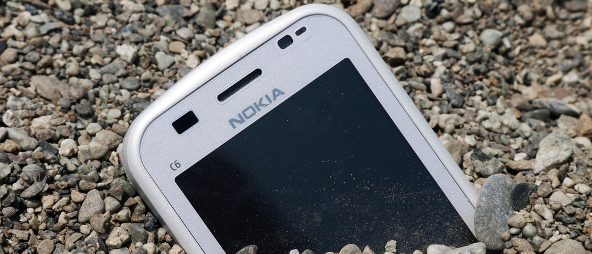
The completion of Microsoft’s deal to by Nokia last week brought to an end one of the great titans of the mobile industry. From the beginning of its mobile device operations in the 1960’s, the Finnish company had constantly strived to be at the forefront of design and functionality, and created some truly iconic devices over the years. So to mark the company’s passing, here are three of our favourite Nokia devices, and three we’ll probably not remember so fondly…

Nokia 3310
The granddaddy of them all, the Nokia 3310 can arguably lay the strongest claim to being the greatest mobile phone of all time. Released in late 2000 as the successor to the revolutionary 3210 (whose antenna-less design won much attention), the 3310 sold 126 million units worldwide and has a huge online cult following to this day, gaining praise for its extensive battery life and near-indestructible construction.
Boasting many pioneering features, including a calculator, stopwatch and a reminder function, the 3310 also allowed interchangeable cases, letting you personalise your phone however you wanted. And of course, it also featured what many people consider to be the best mobile game of all time – Snake II.

Nokia N73
The best-selling phone in Nokia’s NSeries, the N73 was released in late 2006. Acting as a key midpoint between the end of ‘classic’ mobile phones and the modern-day smartphone, the N73 offered a Microsoft Office document viewer, WAP browser, and background execution of apps, allowing for increased multi-tasking.
To capitalise on the success of the original, Nokia also released three other versions of N73, focusing on separate functions. The ‘Music Edition’ featured more storage and greater access to your tunes, the ‘Internet Edition’ (which didn’t really offer much else compared to the original except one redesigned button) , and the ‘Special Edition’, which was targeted at Muslim customers, coming with several dedicated Islamic applications.

Nokia N95
Released in March 2007, three months before the original iPhone, its hard to remember what a revolutionary concept the N95 was. Truly one of the first smartphones, it featured a 5MP camera, a portable media player, and the ability to run several apps at once – all features we now expect as a minimum from our mobile devices.
Its web browser offered support for HTML, JavaScript and Adobe Flash, meaning it was one of the first phones that could properly access the internet wherever you wanted – a real possibility as it was one of the first smartphones to support HSDPA 3.5G networks.

Nokia N-Gage
The N-Gage was Nokia’s ill-fated attempt to take on the popularity of Nintendo’s Game Boy Advance, offering mobile phone functionality built into a hand-held games console. Released in 2003, with an upgraded version following a year later, the N-Gage cost $299 upon launch as Nokia looked to target gamers with a host of popular gaming franchises.
However poor button placement (they proved much too small for accurate gaming), an unconventional ‘taco’ design, and poor call quality meant that the device was ultimately considered a failure, despite actually sold three million units worldwide by 2007.

Nokia 7600
Another to feature in the ‘unconventional design’ category, the 7600 was Nokia’s second 3G handset (after the Nokia 6650). Released in 2003 and targeted at fashionable first-adopters, the device instead became notable for being incredibly awkward to use thanks to its unique teardrop design.
Upon its launch, the 7600 was one of the lightest 3G devices available on the market, but suffered from having poor specifications, featuring a weaker processor and less storage than similar devices.

Nokia 7380
Released in 2005, as part of the "L’Amour Collection", the 7380 was another of Nokia’s ‘unique’ attempts to target the fashion sector. Resembling a tube of lipstick, the 7380 featured a pioneering leather back and metal body, and also featured a highly reflective screen which could double as a mirror.
What really set the device apart, however, was its ‘sensory navigation key’ which substituted for a conventional keypad. Similar to the touch-wheel of an iPad, users scrolled through menus to call, text, or surf the web, or used the device’s speaker-independent voice-dialling function.






